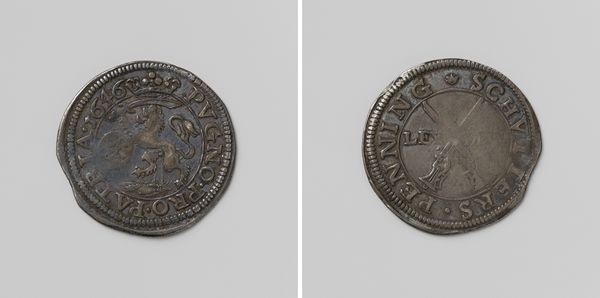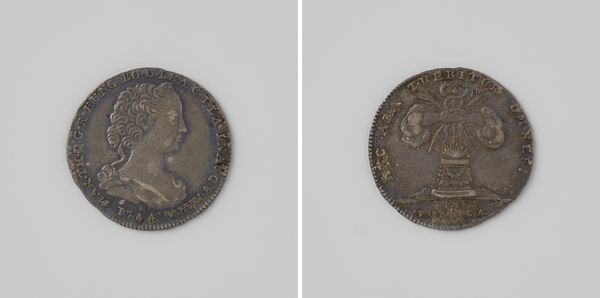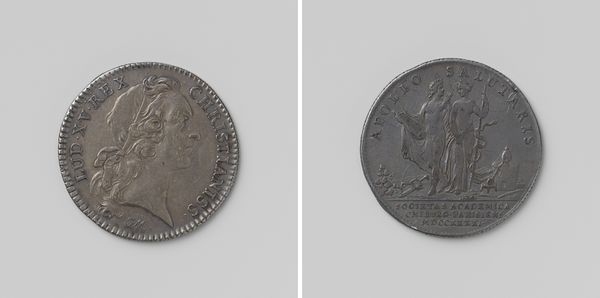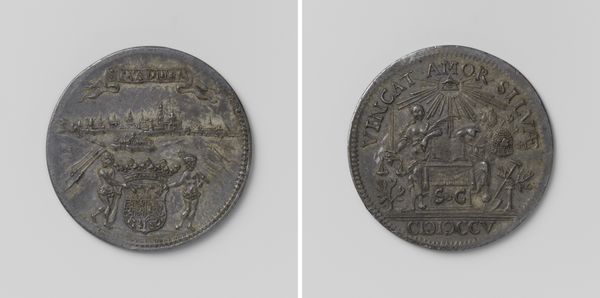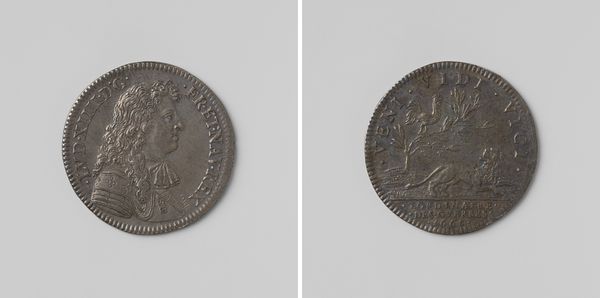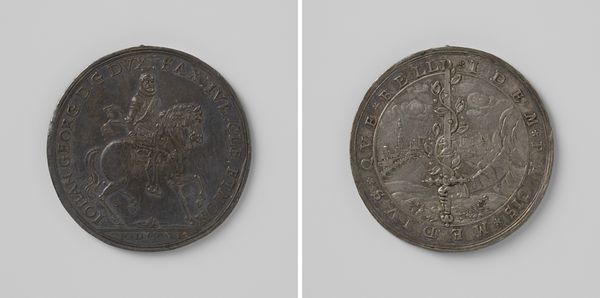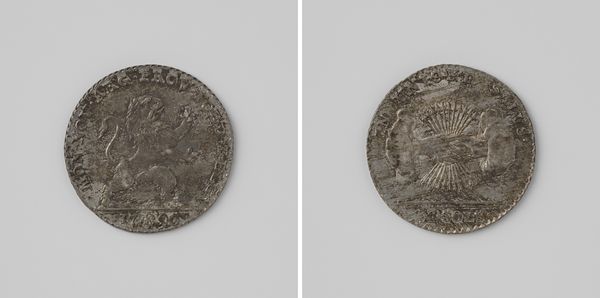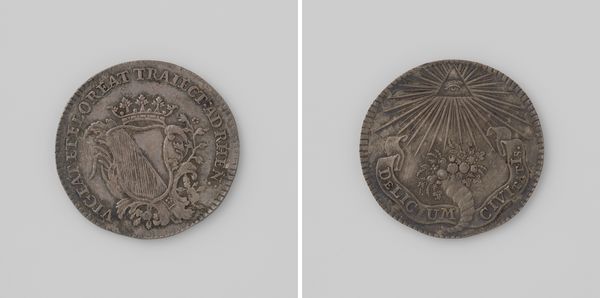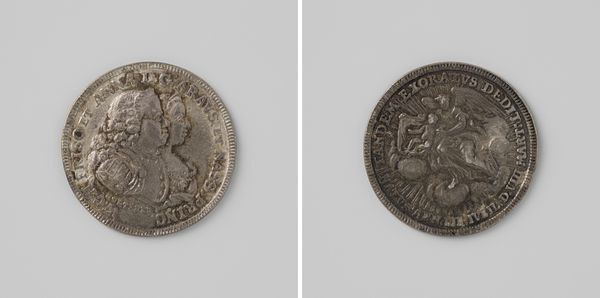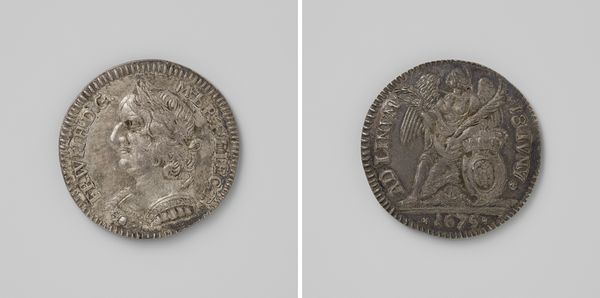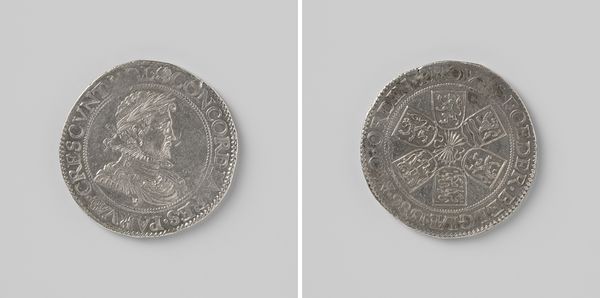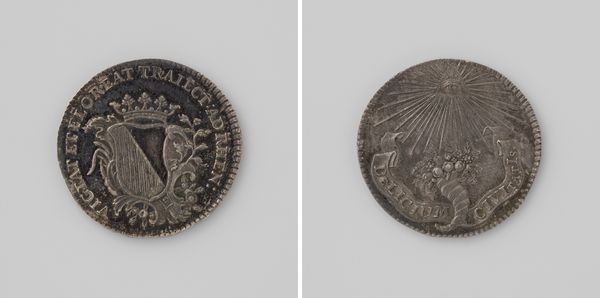
Vrede van Nijmegen, rekenpenning geslagen ter ere van Maria Theresia, koningin van Frankrijk 1679
0:00
0:00
metal, sculpture, engraving
#
portrait
#
baroque
#
metal
#
sculpture
#
engraving
Dimensions: diameter 2.6 cm, weight 6.46 gr
Copyright: Rijks Museum: Open Domain
Curator: Oh, my! Doesn't this coin look like it has stories etched right into its surface? It feels ancient and immediate at the same time. Editor: Absolutely. We're looking at a reckoning penny—a commemorative medal—called the "Peace of Nijmegen," made in 1679 to honor Maria Theresa, Queen of France. Its creation is credited to Monogrammist L, a talented medailleur of the period. Curator: Reckoning penny... I love that. The metal has this gorgeous, dull sheen to it, almost like a stormy sky before a revelation. The queen looks rather formidable; all curls and composure. Editor: Right? Let's delve deeper. These medals, especially during the Baroque period, served as powerful propaganda tools. The Peace of Nijmegen, of course, ended several interconnected wars, primarily between France and the Dutch Republic, amongst others. So, to strike a medal lionizing Maria Theresa—it's a deliberate political move, cementing her legacy. Curator: It makes you think about who got to tell the story, doesn't it? And who was left out? Looking at the reverse, what’s the significance of the scene there, the ships battling against what seems to be...divine intervention? Editor: Exactly. It's depicting the naval battles, reflecting the conflict that finally ended. Note how it's not merely historical reportage. It is layered with meaning— "OPTATA OMNIBUS ADES," a Latin phrase. It declares something along the lines of ‘arrived and hoped for by all.’ Implying of course, that peace was welcomed. Even enforced. Curator: So, almost like a blessing? Do you suppose the artistry, the craftsmanship was as critical as the messaging on something like this? It had to convince at a gut level too, didn't it? Editor: I would say absolutely. Visual rhetoric played a crucial role in how this message would be perceived by society. Baroque art loves grand pronouncements of power and authority—its theatrical and emotionally engaging qualities allowed its message to become both palpable and pervasive. Curator: All of it really invites contemplation of war, peace and political positioning that hasn’t lost its shine even after centuries. Editor: A testament to both artistic and propagandistic effectiveness I suppose; sparking the debate, the discussion is always critical when dealing with an artifact from the past.
Comments
No comments
Be the first to comment and join the conversation on the ultimate creative platform.

